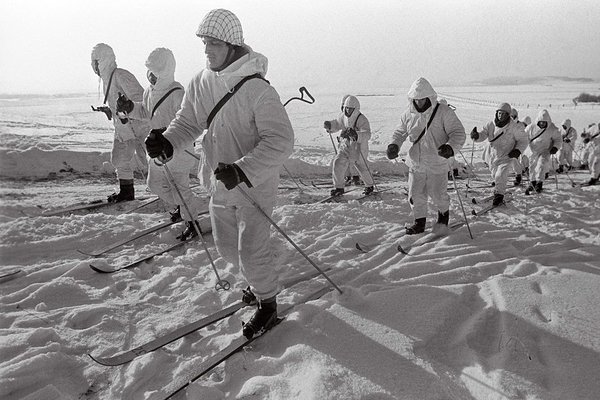
The Estonian War Museum’s 7th Annual Baltic Military History Conference “Visions of War: Experience, Imagination and Predictions of War in the Past and the Present”
The history conference of 2016 at the Estonian War Museum discussed visions of war and predictions of the future in the armed forces, among the security and defence establishment and in society at large. Why have some armed forces been more successful than the others? How should one learn from the past and make accurate predictions? What does it take to innovate successfully? Why should soldiers and security experts learn from civilian visionaries, publicists, writers and even futurologists?
Papers and panel proposals were encouraged to focus on the following topics:
- armed forces and lessons learned from history in the past, the present and in the future
- prognoses of future war (including societal and technological changes) in military affairs
- visions of future war in the media, literature, the arts and sciences
- lessons of the past and predictions about the future in doctrinal development
- visions of the future in military education and training
Speakers and their topics
Chosen works can be found in the Estonian War Museums’s yearbook (linked).
- Prof Martin van Creveld (Hebrew University, Jerusalem) – “Keynote Lecture: Studying War”
- Dr Iain Macinnes (University of the Highlands and Islands) – “(Not) Learning the Lessons of War: Scottish and English Experience of Conflict in the Second War of Independence, 1332–1357”
- Dr Oliver Hemmerle (Grenoble Alpes University) – “Learning from Decisive Battles Prerequisites to Define and Identify Them: The Legacy of Sir Edward S. Creasy for the Imagination and Predictions of War”
- GEN Michael H. Clemmesen (Royal Danish Defence College) – “The Unavoidable Vision Failure – the First World War Naval Case”
- Dr Mart Kuldkepp (University College London) – “Sweden Prepares for War: Official and Unofficial Military Planning during World War One”
- LTC Carlo Cipriani (Italian Air Force) – “Giulio Douchet, the War of the Future: From the Sky”
- Dr Kaarel Piirimäe (Estonian War Museum – General Laidoner Museum) – “Imagined War and Operational Concepts in the Estonian Military in the 1930s”
- Dr Juho Kotakallio (University of Helsinki) – “The Development of the Finnish SIGINT to the End of the Second World War”
- Dr Michael Jung (Leibniz Universität Hannover) – “Werner Osenberg’s Vision of the “Totaleinsatz” of the entire German Research Potential in Total War”
- Mr Alon Posner (Hebrew University, Jerusalem) – “Imagining Future Wars: Israeli and South African Perspectives”
- Prof Gary Baines (Rhodes University) – “Waging War by Analogy: The Cultural Codification of South Africa’s “Border War””
- Dr Robert Jacobs (Hiroshima City University) – “Imagining a Nuclear World War Two in Europe: Preparing US Troops for the Battlefield Use of Nuclear Weapons”
- Benedict von Bremen (Eberhard Karl Universität Tübingen) – “Imagining the Third World War: Discussions about NATO’s Conventional Defence in the 1970s”
- Dr Blaž Torkar (Military School Centre of the Slovenian Armed Forces/Military Museum) – “The Doctrine of Total People’s Defence – What Yugoslav Armed Forces Learned from it’s Past”
- Dr Dmitar Tasic (University College Dublin) – “”We Weren’t Preparing for this Kind of War…” Yugoslav Peoples Army Doctrine and Wars for Yugoslav Succession, 1991-1999″
- Hellar Lill (Estonian War Museum) – “Models from the Past and Visions of the Future in the Development of the Estonian Defence Policy, 1991–1999”
- Dr James S. Corum (Salford University) – “The US Model of War 1990s to the Present – Wrond Assumptions leading to Strategic Failure”
- Dr Tamir Libel (Barcelona Institute of International Studies) – “Comparing Contemporary European Professional Military Education: Drivers and Agents of Change”
- Dr Daniel M. Rogrigues (IE University, Spain) – “Conflict Prospects in Popular Culture: TV Series, Movies and Future Visions of War”
- Dr Lukasz Kamienski (Jagiellonian University of Kraków) – “Will G.I. Stand for Genetic Infantryman? Genetics, Genomics, and the Prospects of Human Enhancement in the U.S. Military”
- Mr Tobias J. Burgers (Free University Berlin) – “Human Vision of Non-human Future War? How Advances in Digital and Robotic Technology are Creating a new Non-human Notion of Conflict and how such Conflict could be Perpetual”

